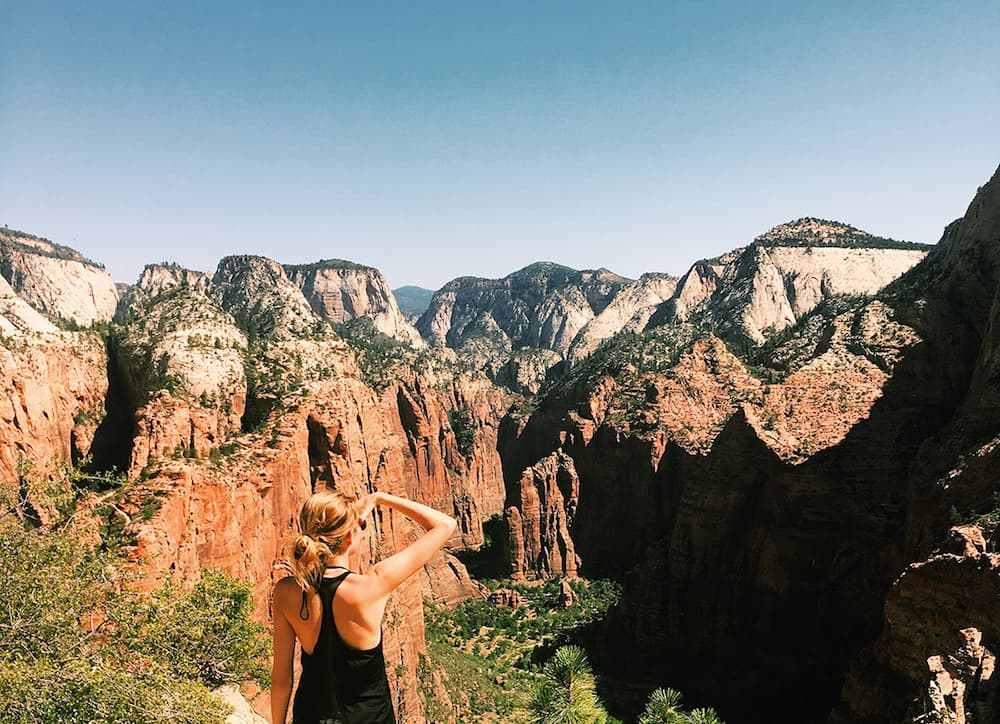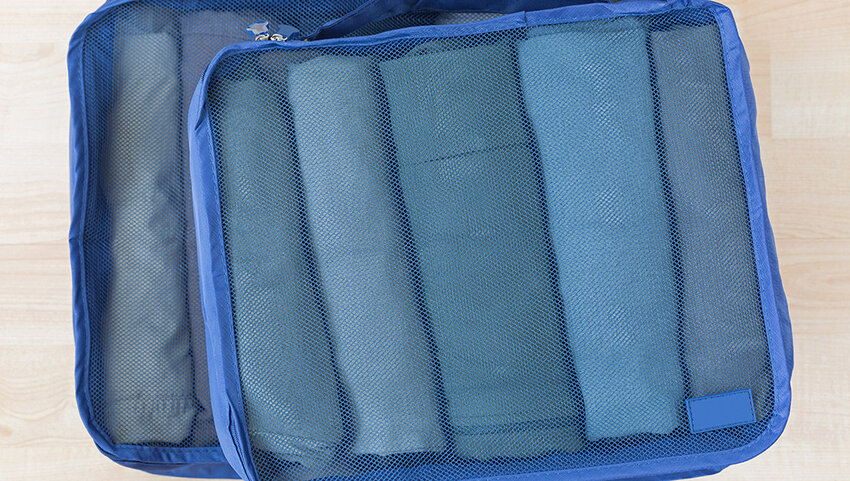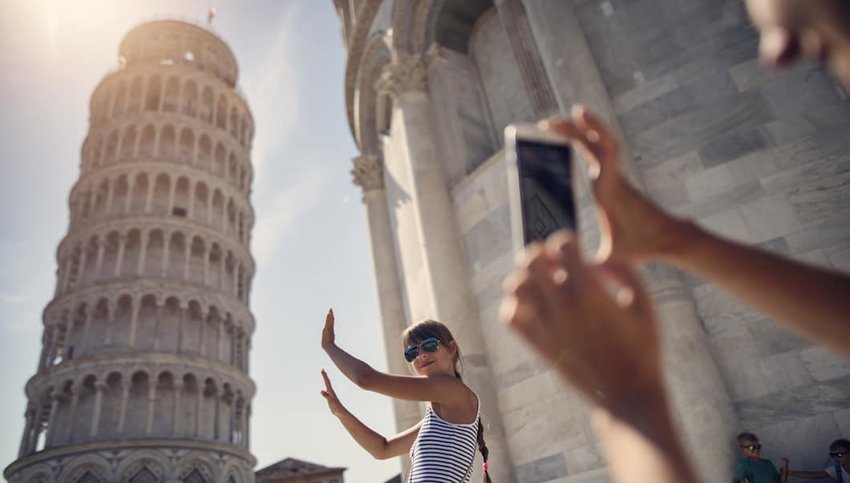Let’s face it. Planning a full-day or overnight hike can be daunting, especially when you’re more concerned about what cute legging-sneaker combo you’re going to wear, than what you might actually need for a day on the trail.
I had never considered myself an outdoorsy person but after spending six years in the concrete jungle of New York City, leaving my full-time job in fashion, and starting my own business, I found myself craving a connection to nature. I immediately took off for the West. I spent the next 60 days living out of a car; camping, hiking, and exploring 9 states and 12 of America’s National Parks, all while running my business from the road.
I was a fairly inexperienced hiker prior to embarking on the trip, only having 2-3 successful long hikes under my belt, and my only physical training was doing yoga and attending SoulCycle classes 2-3x per week. I gained confidence each day on the trail and by the end of the summer, I conquered my longest hike in one day: 17 miles with 4,000ft of elevation change in 9 hours in Yosemite National Park, CA.
Here are the top 15 tips I learned for a successful, stress-free day on the trail.
1. Pack in, pack out.
Bring everything you will need and take your trash with you, leaving ONLY footprints behind.
2. Come prepared.
Think of all the unexpected “What might you need if...?” situations. I always had a trail map, compass, first aid kit, full pouch of water (2 liter Camelbak), extra water bottles, bandana, extra layers, poncho or rain jacket, ball cap or beanie, sunglasses, pocket knife, bear spray if needed, snacks/extra food, flashlight or headlamp in case I stayed out past sunset, camera equipment, and extra socks (This is especially important if, like me, your shoes are NOT waterproof).
3. Always start at the visitor center.
To better prepare for any hike, get trail maps and hiking recommendations from the rangers and volunteers that work there. They will let you know of any trail closures or potential problems you could run into.
4. Comfort is key. Get good shoes.
No question – this will make or break your hiking experience. Opt for shoes with deep, wide lugs to tackle a variety of terrains, high-tops if possible to avoid sprained ankles, and waterproof shells in case of rain or river crossings. For clothing, opt for quick-dry and moisture-wicking materials.
5. Drink Water.
Even if you don’t feel thirsty, your body needs hydration. In the desert, with up to 110-degree temperatures, I had a rule of taking a sip of water every two minutes. My Camelbak was the most used and most loved piece of equipment. Having the ease of drinking while continuously moving offers a huge advantage. As a bonus, the cells on the backside of the pack disperse heat so you don’t sweat as much and helps keep your body cool too.
6. Acclimate to the altitude.
It takes time for your body to adjust to differing elevations, especially when you are exerting a lot of physical effort. Keep yourself hydrated and well-fueled, and you will be fine.
7. Stay on the trail.
Plant vegetation is very fragile, especially moss. It takes years to grow back. Park rangers do keep the trails well maintained, even in the backcountry.
8. “Happy Trails!”
Passing people on trails is different than passing people on a city block. On the trails, I found it courteous to acknowledge everyone I passed.
9. Step aside.
If you hear another hiker or group behind you, step aside to let them pass. Everyone hikes at their own speed, and trails can be tight. Allow faster hikers to pass. Trust me, they will appreciate it.
10. Teamwork.
Teaming up with fellow hikers can often be advantageous. My partner & I teamed up with two other groups to assist and spot each other down an 8 ft. drop into a slot canyon on the border of Utah & Arizona. It would have been more difficult and less safe to pass on our own.
11. Look out for others.
If someone looks like they need assistance, direction, water, or an extra hand, help them out. If you spot potentially dangerous situations, warn others heading the opposite way. When we were hiking in Yosemite National Park, CA, a group coming towards us stopped to warn us that they had just passed a bear cub. They asked if we had seen its mother, which we hadn’t. Mama bears are the most dangerous as they are very protective of their young cubs. We joined forces with a solo hiker and another group to make our larger group less of a target. Together, we all scurried our way past the bear cub who was in the center of the trail. We thankfully never saw its mother. Thanks to the prior warning, we were able to hike smarter, grow our group size, and be on high alert in case the situation escalated.
12. Keep your music to yourself.
Many hikers get on the trail to disconnect and to enjoy nature without modern-day interruptions. If you want to listen to music on the trail, use headphones.
13. “Just keep swimming.”
This is the phrase that I said the most to myself on hard, long hikes to keep me going. On the most physically defeating hikes, you get to the finish line simply by putting one foot in front of the other. Hiking up to Upper Yosemite Falls in Yosemite National Park, CA, the most strenuous hike of our trip, I had to repeat this to myself every small switchback to the top. I knew if I conquered the mental game and stayed in a positive mindset, my body would follow suit. And it did.
14. Smile!
Always.

15. Linger, Longer.
Enjoy the view. You earned it.






